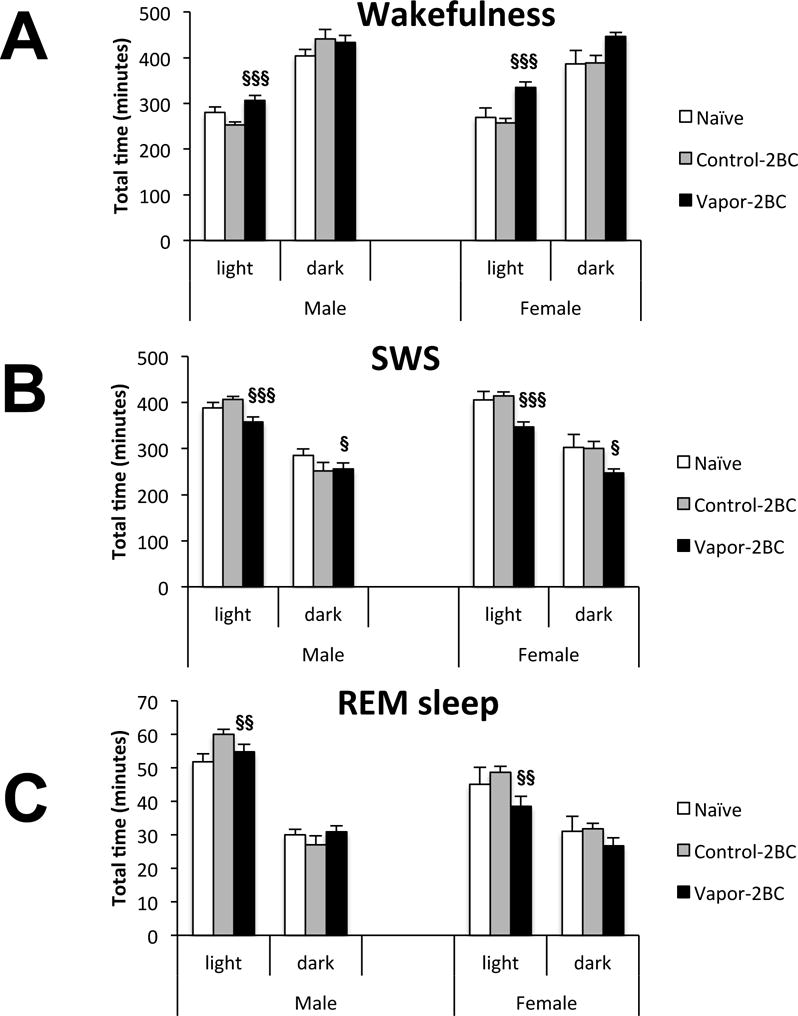Figure 3.

Total time of W (A), SWS (B) and REM sleep (C) 4 days after EtOH withdrawal. Each bar represents total amounts of these vigilance states across 12 hours of light and 12 hours of dark. Values (Mean +/− SEM) were compared using a two way ANOVA and Fisher’s PLSD tests. Data are presented separately for males and females; however the post-hoc statistics were performed with sexes combined since there were no significant effects involving sex. In the light phase, vapor-2BC mice had more time in W and less time in SWS than both control-2BC and naïve mice. REM was significantly reduced in vapor-2BC mice as compared to control-2BC mice in the light phase. In the dark phase, vapor-2BC mice spent less time in SWS relative to naïve mice. § p < 0.05 vs. naïve, §§ p < 0.05 vs. control-2BC, §§§ vs. both control-2BC & naïve, all with sexes combined.
